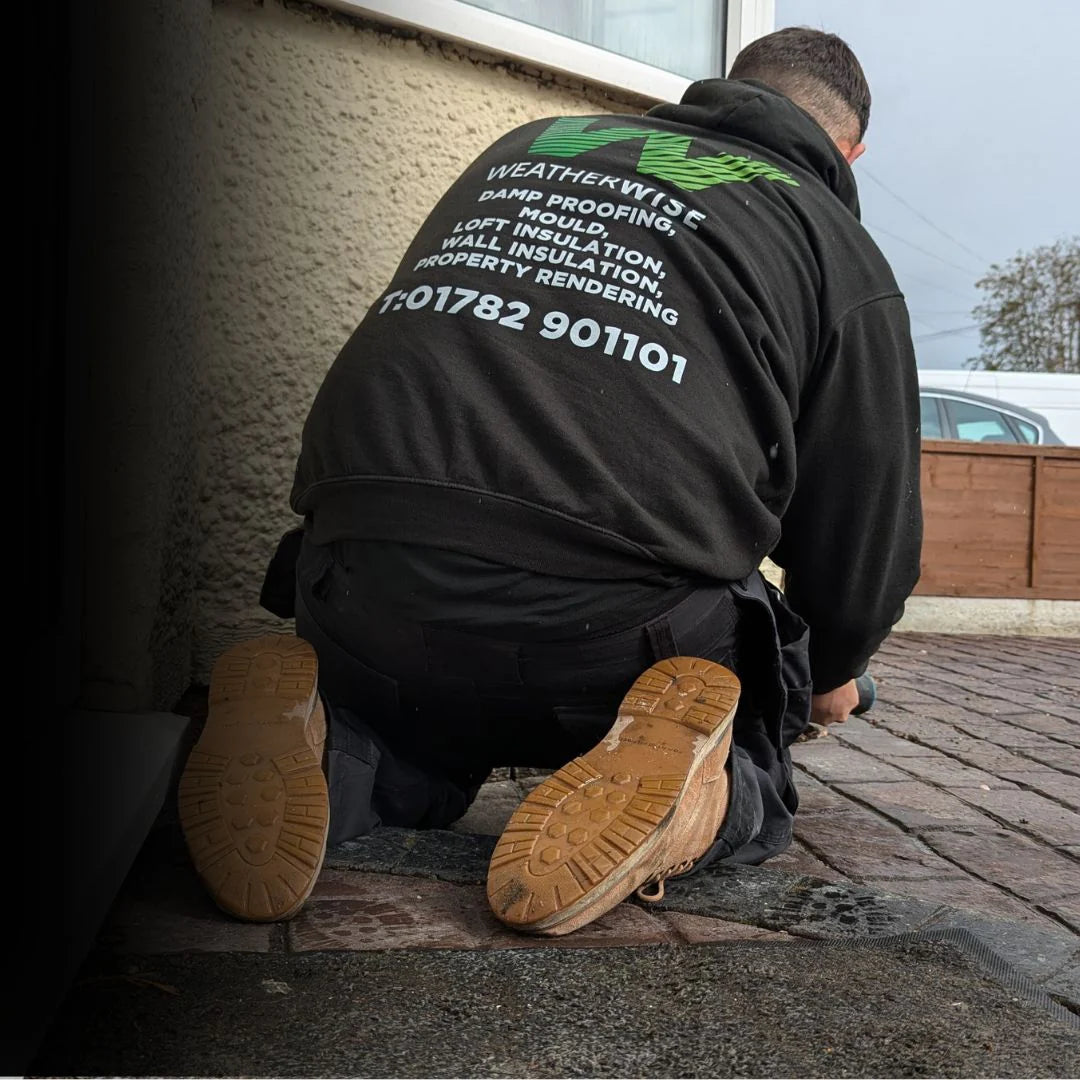🧱 Why Is There Damp on Your Chimney Breast?
If you’ve noticed dark patches, peeling paint, or mould on your chimney breast, you’re not alone.
This is a very common issue in Glossop homes, particularly in older stone or brick terraces. But is tanking always the answer?
At Weather Wise Solutions, we regularly inspect chimney breast damp and help homeowners understand whether they need tanking, ventilation, or just better plastering.
🔍 Common Causes of Chimney Damp
-
Soot Salts (Hygroscopic Salts):
These salts remain in the chimney flue long after the fireplace has been sealed. They absorb moisture from the air, making the wall appear constantly damp. -
Bridging from Old Plaster or Debris:
If old plaster or rubble inside the chimney is in contact with the wall or floor, it can bridge moisture upwards and outwards into your internal wall. -
Poor Ventilation:
A sealed chimney breast without ventilation becomes cold and traps moisture, encouraging condensation. -
No DPC in the Chimney Wall:
In older Glossop homes, chimney stacks often lack a physical damp proof course, making them more susceptible to rising or penetrating damp. -
Cavity Debris or Faulty Flashing (if damp is higher up):
While this blog focuses on ground-floor chimney damp, moisture higher up may be due to external defects.
🧪 Signs That Tanking May Be Needed
-
Wall is constantly damp despite heating and ventilation
-
Repainting or re-plastering hasn’t solved the issue
-
Salt staining is visible on the surface
-
You’ve already ruled out external leaks or roof flashing problems
-
You want to use the room but the fireplace is sealed and damp
✅ What Is Chimney Breast Tanking?
Tanking involves applying a cementitious waterproof barrier to the internal face of the chimney breast — usually using products like Mapelastic 2KR or Remmers MB 2K. This creates a moisture-resistant seal that protects internal finishes.
Tanking is often followed by:
-
Salt-resistant render or lime plaster
-
Breathable finish coats
-
Vent installation (especially if the flue is still sealed)
🛠️ Alternative Solutions We May Recommend in Glossop
Not every chimney breast needs full tanking. Depending on what we find during our inspection, we may suggest:
-
Installing a vent into the flue to promote airflow
-
Removing and replacing bridged plaster
-
Applying a salt inhibitor before re-plastering
-
Checking floor levels to prevent bridging at the base
-
Lime plaster reinstatement for breathability
🏠 Why Glossop Homes Are Prone to Chimney Damp
The historic homes across areas like Old Glossop, Whitfield and Hadfield often have:
-
No DPC in chimney stacks
-
Soot-filled sealed flues
-
Poor insulation or airflow
-
Thick stone or brickwork that traps moisture
These properties are beautiful — but they need sympathetic treatment and breathable materials to stay healthy.
👷♂️ Why Choose Weather Wise?
-
✅ Full chimney and moisture diagnostics
-
✅ Tanking, ventilation and lime plaster services
-
✅ Specialists in heritage and solid wall homes
-
✅ Members of the Damp Proofing Association
-
✅ Trusted by the Federation of Damp
📞 Book Your Free Chimney Breast Inspection in Glossop
https://weatherwiseuk.co.uk/pages/contact
FAQs
Does sealing the chimney cause damp?
It can — if not vented, sealed chimneys trap moisture, leading to condensation and mould.
Can I just repaint the wall?
You can, but the stain will likely return unless you deal with the underlying salts or moisture.
Do I always need to tank a chimney breast?
No. Sometimes ventilation or salt-inhibiting plaster is enough. That’s why a professional assessment matters.



